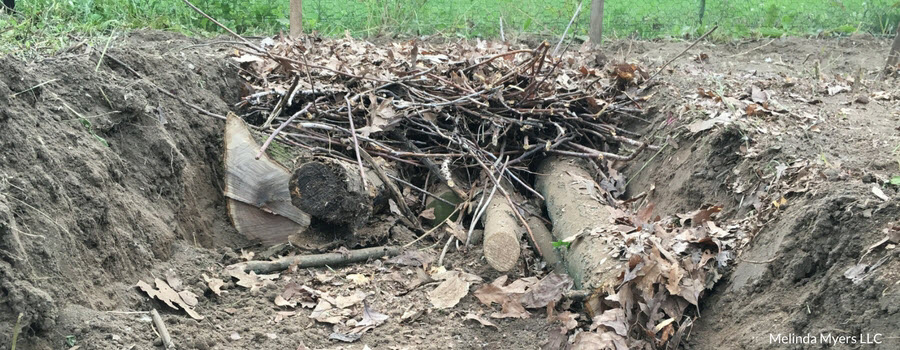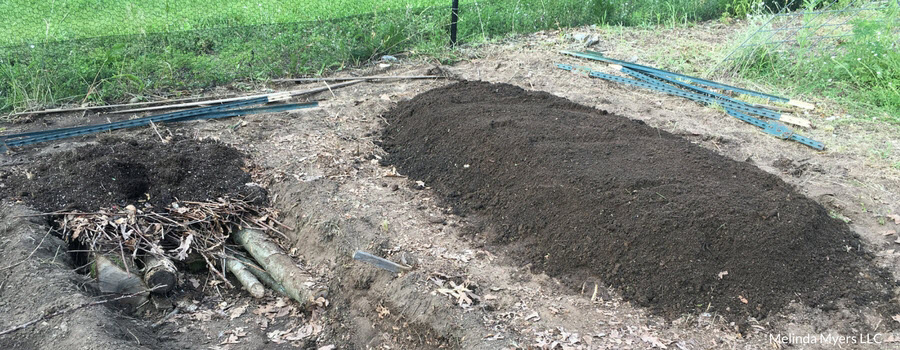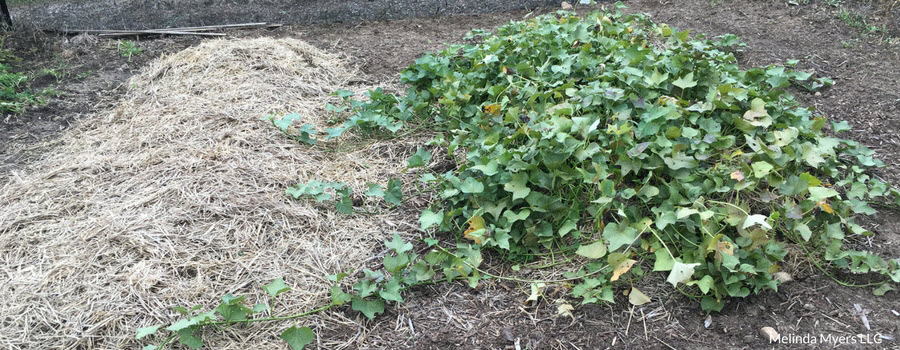Create Raised Bed Gardens with Hugelkultur
- horticulturist and gardening expertJanuary 27, 2018
Don’t let poor soil stop you from gardening. Create a raised bed of nutrient rich garden soil with Hugelkultur. Convert garden debris such as twigs, branches, logs and leaves into a garden ready for spring planting.
And when you garden in a raised bed filled with this great soil you’ve created; you can extend the growing season and conserve moisture with less weeding and bending.
What is Hugelkultur?
Hugelkultur is German for mound culture. The goal of this growing system is to mimic the natural decay and soil building system of the woodlands.
Just like the trees that fall in the woods, the logs and branches in your Hugelkultur bed absorb moisture and release it to the surrounding soil. And as all the organic matter decays it releases nutrients to the plants growing in the garden.
Since it takes years for the woody plant debris to decay, the moisture and nutrient benefits also last for many years. So all the upfront work reduces the amount of water, fertilizer and effort needed to manage the garden for years to come.
I must admit I was a bit skeptical at first; concerned the woody material would temporarily tie up the nitrogen in the garden bed and stunt the plants’ growth. But several Hugelkultur gardeners shared their successes and an experiment by a master gardener at the University of California Cooperative Extension found this was not a problem.
How to Start:
You can build your garden in a sunny or shady location. Just match the plant to the growing conditions. Vegetables produce best when grown in full sun. Greens like lettuce and spinach and root crops like carrots and beets will tolerant partial shade. Check plant tags and garden catalogues for the light requirements of other plants you plan to grow in your Hugelkultur garden.
Create your Hugelkultur garden on the soil surface or start it in a trench. I started mine below ground since I have fast draining sandy soil and very windy conditions.

Use larger branches and logs for the lowest level of your garden. Avoid cedar and black locust that break down slowly and black walnut that can be toxic to many plants.
Fill the voids in this layer with more carbon rich material such as dried tree leaves and straw. Cover this layer with nitrogen rich materials like plant based kitchen scraps, annual weeds that have not gone to seed and herbicide free grass clippings.
Although many gardeners skip the fertilizer, I sprinkled Milorganite over this layer. Not only does it feed the soil microorganisms as they decompose the garden debris it contains 85% organic matter to help build the soil.
Cover this layer with an inch or so of compost or composted manure and top it off with several, I used 4 to 6, inches of topsoil.

You can plant immediately or allow your raised bed to settle for several months. I planted one of the beds right away with sweet potato transplants. I had an amazing harvest despite my late planting date in early July.

I mulched the other bed to suppress the weeds throughout the remainder of the growing season. I can’t wait to plant both Hugelkultur garden beds this spring. Recycling plant debris in place is not only good for the garden and gardener; it is also good for the environment.


